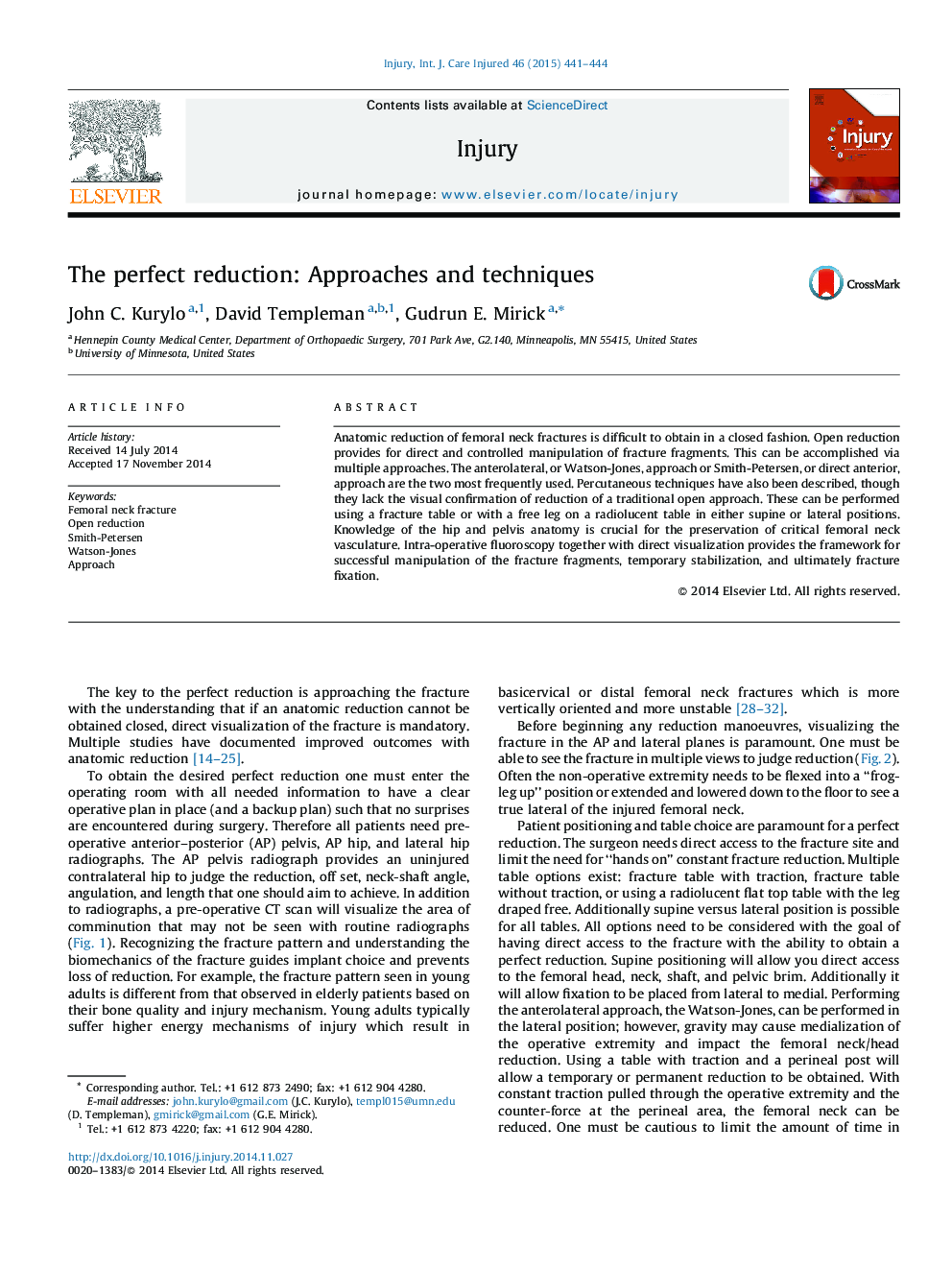| Article ID | Journal | Published Year | Pages | File Type |
|---|---|---|---|---|
| 3239090 | Injury | 2015 | 4 Pages |
Anatomic reduction of femoral neck fractures is difficult to obtain in a closed fashion. Open reduction provides for direct and controlled manipulation of fracture fragments. This can be accomplished via multiple approaches. The anterolateral, or Watson-Jones, approach or Smith-Petersen, or direct anterior, approach are the two most frequently used. Percutaneous techniques have also been described, though they lack the visual confirmation of reduction of a traditional open approach. These can be performed using a fracture table or with a free leg on a radiolucent table in either supine or lateral positions. Knowledge of the hip and pelvis anatomy is crucial for the preservation of critical femoral neck vasculature. Intra-operative fluoroscopy together with direct visualization provides the framework for successful manipulation of the fracture fragments, temporary stabilization, and ultimately fracture fixation.
